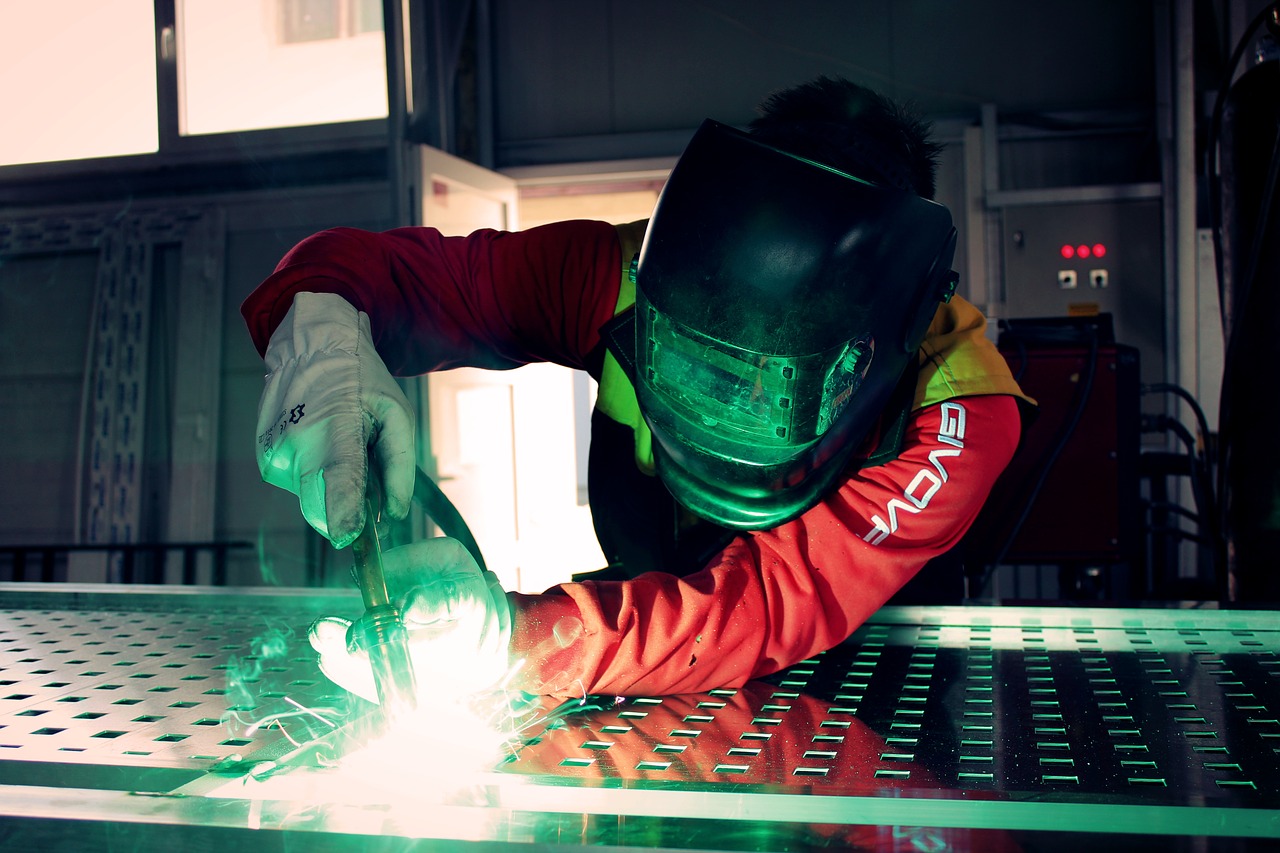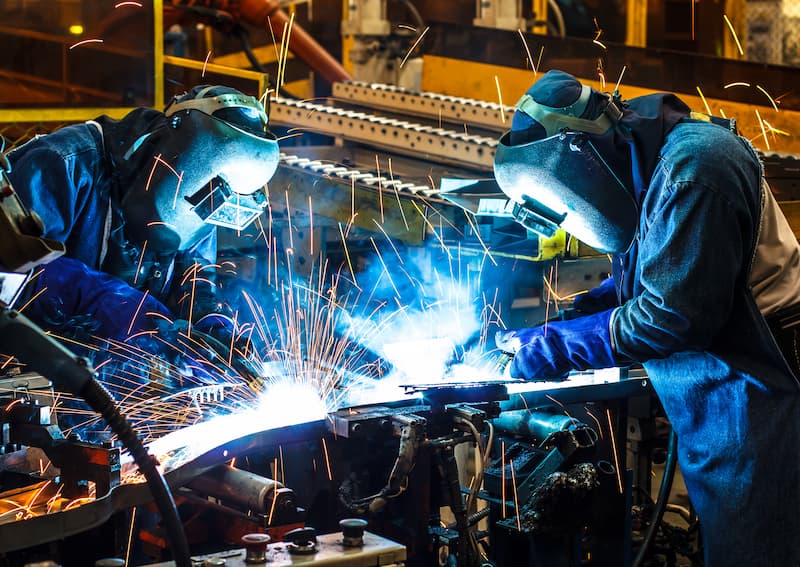All About Welding: Trick Insights Into Techniques and Best Practices for Success
Welding incorporates a range of techniques, each suited for details products and applications. Recognizing these approaches, such as GMAW, SMAW, and TIG, is important for achieving excellent results. The appropriate devices and security techniques can not be forgotten. As prep work and fixing play crucial functions in the welding procedure, mastering these elements can significantly enhance the top quality of the end product. What are the essential elements that guarantee an effective weld?
Understanding Various Welding Methods
Welding strategies incorporate a variety of methods, each matched to specific applications and materials. Among one of the most usual techniques are Gas Metal Arc Welding (GMAW), Secured Metal Arc Welding (SMAW), and Tungsten Inert Gas Welding (TIG) GMAW, additionally referred to as MIG welding, is preferred for its speed and versatility, making it excellent for slim materials. SMAW, or stick welding, is preferred for its simpleness and effectiveness in exterior settings, particularly with thicker metals. TIG welding uses accuracy and control, making it ideal for elaborate work and non-ferrous steels (Fabrication). Each method has its unique benefits and factors to consider, allowing welders to select the very best approach based on the job's demands, material type, and desired end results. Comprehending these strategies is important for effective welding
Essential Welding Equipment and Devices
While different welding methods call for specific abilities, the appropriate devices and devices are just as necessary for achieving quality results. Necessary welding equipment consists of welding equipments, which differ relying on the strategy-- such as MIG, TIG, or stick welding. Safety equipment, including aprons, handwear covers, and safety helmets, guarantees safety and security and convenience throughout the procedure. Additionally, clamps and fixtures aid secure products in position, guaranteeing precision in welds. Consumables like welding poles, cable, and shielding gas are also crucial parts that influence the quality of the weld. Devices such as grinders and cutters promote surface area prep work and post-weld ending up, adding to a specialist end result. Spending in premium devices inevitably boosts the effectiveness and efficiency of welding projects.
Safety Practices in Welding
Appropriate safety techniques are essential in the welding industry to safeguard workers from prospective hazards. Welders should put on proper individual protective equipment (PPE), consisting of headgears with proper shading, handwear covers, and flame-resistant clothes. Ample air flow is crucial to decrease exposure to hazardous fumes and gases produced throughout the welding process. Additionally, employees need to be learnt the correct handling of welding devices to stop accidents. Fire safety and security steps, such as maintaining combustible products far from the welding area and having fire extinguishers conveniently available, are necessary. Regular assessments of devices and offices can aid recognize prospective threats prior to they bring about mishaps. By adhering to these safety methods, welders can develop a safer working environment and decrease risks connected with their profession.
Preparing Products for Welding
Preparing products for welding is an important action that considerably affects the quality and integrity of the end product (Belgrade). Proper prep work includes cleaning the surfaces to remove impurities such as dirt, rust, and oil, which can endanger the weld. Strategies such as grinding, sanding, or making use of solvents are typically employed to attain a clean surface. In addition, ensuring that the products fit together snugly is crucial; spaces can lead to weak welds. It's also vital to think about the placement and positioning of the components, as this will influence the convenience of welding and the last result. Picking the appropriate filler product and ensuring compatibility with the base steels is vital for attaining strong, durable welds.
Tips for Getting High-Quality Welds
Achieving premium welds calls for focus to detail and adherence to ideal techniques throughout the welding procedure. Proper joint prep work is vital, making certain surfaces are tidy and complimentary from impurities. Picking the ideal filler product and welding strategy based on the base steels is vital for suitable bonding. Preserving constant traveling speed and angle while welding can prevent problems and advertise harmony. Furthermore, controlling heat input is essential; excessive warmth can cause warping and weakened joints. Routinely inspecting the welds throughout the process enables instant modifications if required. Using appropriate post-weld therapies, such as cleansing and stress alleviation, can improve the sturdiness and honesty of the weld, ultimately making certain a successful end result.
Repairing Typical Welding Issues
Welding often presents difficulties that can affect the high quality and integrity of the end product. Usual issues such as porosity, inconsistent weld grains, and overheating can occur, each requiring certain repairing techniques. Comprehending these troubles is essential for welders to improve their skills and attain ideal outcomes.
Porosity Issues Discussed
Although porosity can usually be forgotten, it continues to be an essential concern in welding that can endanger the honesty of a completed product. Porosity refers to the visibility of small gas pockets within the weld grain, which can lead and weaken the joint to early failure. This issue generally occurs from pollutants, dampness, or inappropriate securing gas protection during the welding process. To minimize porosity, welders must validate that the base materials are completely dry and tidy, make use of appropriate protecting gases, and keep consistent welding specifications. Regularly inspecting the devices and atmosphere can additionally assist identify prospective issues before they show up in the weld. Dealing with porosity effectively is vital for attaining solid, resilient welds that fulfill high quality criteria.

Irregular Weld Beads
Irregular weld grains can considerably affect the high quality and toughness of a finished product. Different factors contribute to this issue, including improper travel rate, inaccurate amperage setups, and irregular electrode angles. When the welder relocates too promptly, a grain may show up narrow and do not have penetration, while moving also gradually can cause excessive buildup. In addition, utilizing the women welders wrong amperage can cause either damaging or extreme spatter, both of which compromise weld stability. The welder's technique, such as inconsistent torch motion, can additionally lead to irregular bead look. To minimize these troubles, welders need to concentrate silicon bronze mig wire on keeping steady, controlled motions and making sure correct tools setups to achieve uniformity in their welds. Uniformity is key to attaining solid and reliable welds.
Getting Too Hot and Warping Issues
Too much warmth throughout the welding process can result in considerable getting too hot and deforming issues, impacting the architectural honesty of the workpiece. These problems typically manifest as distortion, which can jeopardize placement and fit-up, making further setting up challenging. Elements adding to overheating consist of the choice of welding criteria, such as voltage and take a trip rate, along with the kind of product being welded. To alleviate these issues, welders need to maintain constant traveling speed and appropriate warmth input while keeping track of the work surface temperature. Additionally, preheating or post-weld warm therapy can assist minimize stress and anxieties triggered by rapid cooling - Belgrade Fabrication. Regular assessment and adherence to best methods are vital in preventing getting too hot and guaranteeing the longevity and integrity of welded frameworks
Regularly Asked Questions
What Are the Occupation Opportunities in the Welding Market?
The welding market provides diverse career chances, consisting of placements as welders, educators, assessors, and designers. Professionals can operate in production, building and construction, aerospace, and vehicle industries, taking advantage of strong need and competitive incomes in different duties.
Exactly How Can I Enhance My Welding Speed Without Sacrificing Top Quality?
To improve welding rate without sacrificing top quality, one need to exercise reliable techniques, preserve devices, optimize settings, and boost hand-eye control. Regular training and seeking feedback can also significantly add to achieving faster, top quality welds.
What Certifications Are Available for Welders?
Various accreditations exist for welders, including those from the American Welding Culture (AWS), the National Facility for Construction Education And Learning and Research (NCCER), and different industry-specific companies. These credentials improve employability and show ability effectiveness.
Just How Does Welding Impact the Qualities of Metals?
Welding influences the properties of metals by modifying their microstructure, which can result in modifications in strength, ductility, and solidity. Warmth input and air conditioning rates throughout the process considerably impact these product qualities.
Can I Weld Dissimilar Metals Together?
